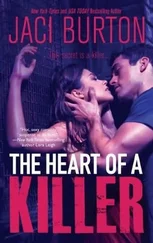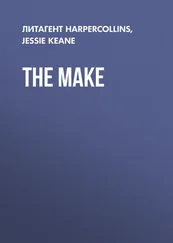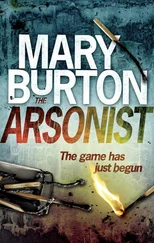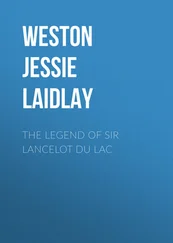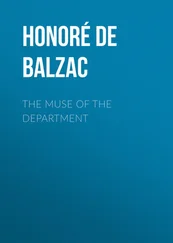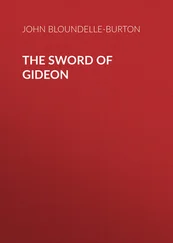‘As I was saying, Mr Scott,’ Reede went on, ‘three years ago, Peggy Guggenheim’s entire Venetian collection came to the Tate on temporary loan. Whilst Women in the Wheatfield was here on the Tate’s public walls, your own Robles painting was hiding in the shadows. It’s extraordinary to think we could have matched them then, had we known. There was so much to-ing and fro-ing over that exhibition, between the British government and the Italian authorities,’ he said. ‘Tax issues, mainly. But that was for a hundred and eighty-odd pieces, and I’ve only asked for three. So the good news is, they’re letting us borrow their Isaac Robles pieces.’
‘That is good news,’ said Lawrie.
‘It’s wonderful. It’ll really bolster the exhibition. I hope the news pages will give us coverage as well as the arts sections. We’re getting Women in the Wheatfield , a landscape called The Orchard , and rather brilliantly, something I wasn’t aware of — his Self-Portrait in Green . And what will be exciting about the reunion of Women in the Wheatfield with Rufina and the Lion is that it could change the way we view Isaac Robles generally.’
‘Why?’
‘Rufina was one of a pair of sisters,’ Reede said. ‘Justa was the name of the other.’
‘Justa?’
‘The story goes that Justa was thrown down a well to starve. I believe that Women in the Wheatfield is actually the story of Saint Justa — and that there’s only one girl in it, not two. We see Justa before and after her punishment, once in happiness, and then in torment. The smashed pots around her back up this idea. It’s the mask of the goddess Venus, broken in half, and that appears in the myth.’
‘I see,’ said Lawrie.
‘There have been different interpretations of the circle that the woman lies in over the wheatfield. Some art historians say it is one of Dante’s circles, others say it’s the moon — and some identify it as the rotundity of planet earth, particularly with those woodland animals around it. But I believe she’s actually lying at the bottom of a well, as per the myth. Here,’ he said, handing Lawrie four pieces of paper, which had copies of paintings on them. ‘Robles wasn’t the only Spaniard to paint Rufina and Justa. Velázquez, Zurburán, Murillo and Goya, all four great Spanish painters, painted those sisters. I’m trying to get a loan of at least one of these paintings to complement the exhibition.’
‘Do you think you’ll get them?’ asked Lawrie.
Reede rose to his feet, and rubbed his hands together. ‘Maybe. Maybe. I really do hope for it.’ He smiled. ‘It would be something extraordinary. The chances are Robles was well aware of these other works. I’ve told the galleries who have these pieces that I want to examine the particular Hispanic pathology around the myth of Justa and Rufina.’
‘The Spaniards have always been incredibly subversive artists,’ said Quick.
‘Yes,’ said Reede, looking at her more warmly, one arm propped up on the mantelpiece. ‘Creative rebellion against the status quo. Just look at the Goya. He would be the one to put in a lion, kissing her toe. And can you imagine what Dalí would do with it?’
‘But why is the Guggenheim Robles called Women in the Wheatfield , with no reference to Saint Justa, if mine’s called Rufina and the Lion ?’ Lawrie asked.
‘Harold Schloss might have called it Women in the Wheatfield , not Isaac Robles,’ said Reede. ‘Robles might have easily called it Saint Justa, for example. We’ll never know. He may not have given it a name at all.’
At the mention of Harold Schloss, I glanced over again at Quick. Her head was bowed, and she was massaging her temple. I wondered if she needed another painkiller. She seemed determined to get as close to Reede’s plans as possible, despite the visible trauma it was causing.
‘The salesman in Schloss,’ Reede went on, beginning to pace around us, ‘probably wanted to make the painting more attractive for Guggenheim’s purchasing sallies. She hadn’t bought much before this; he didn’t want to scare her off. It’s the same sort of thing as Picasso wanting Les Demoiselles d’Avignon to be called The Brothel of Avignon , and his exhibitors changing the name, apparently to make it more appealing. And Schloss may not have known that a companion piece to Justa and her well was on its way. Somewhere along the line, I believe that what Isaac Robles wished to communicate in these paintings was lost.’
‘And what did he want to communicate?’ said Lawrie.
I looked at Quick again; she was gazing up now at Reede, with a blank expression on her face.
‘I think Robles was very interested in this myth,’ Reede said. ‘And discovering this connection between the Guggenheim Robles and the Surrey Robles allows us a new window on to his artistic process, to reinterpret his preoccupations — to reinvent him, if you like. This exhibition may be “The Swallowed Century”, but we are still trying to digest it, so to speak.’
‘Reinvent him?’
‘Succeeding generations do it all the time, Mr Scott. Don’t be alarmed. We can never bear to think we haven’t thought of something new. And tastes change; we have to be ahead of them. We are resurrecting an artist at the same time as enacting his retrospective. My approach will allow us to describe Robles’s awareness of a glorious national historical tradition — Velazquez and the rest — whilst being something of a contemporary international star, cut down in his prime.’
‘You’ve really got it all planned, haven’t you.’
‘That’s my job, Mr Scott. I can’t tell you yet what exactly he was trying to communicate, but I want to take a political slant with your painting in particular. Rufina, the defiant worker saint, facing down the lion of fascism. Have a look at this,’ he said, handing over yet another document for Lawrie to read. ‘I was sent that from Barozzi at the Guggenheim foundation. Harold Schloss wrote it to Peggy Guggenheim when he was in Paris again, and she had returned to New York.’
‘Mr Scott,’ said Quick, and the men jumped. ‘Could you read it out loud? Neither Miss Bastien nor I are furnished with a copy.’
Lawrie obliged.
Dear Peggy,
Forgive me for not making my presence known to you in time before you left Paris. Everything, since my departure from Spain to my arrival back in this city, has been very difficult. I tried to bring Rufina with me, but have failed. I know how much you were looking forward to it, and I am deeply sorry.
I have a couple of early Klees you may like to look at instead — I myself will not travel to Vienna, but am organizing them to be sent to London — or perhaps, if you’re staying in New York for some time tying up matters, and are interested, I may send them straight there?
My best to you, as ever,
Harold Schloss ’
Lawrie looked up at Reede. ‘He doesn’t mention Robles at all.’
‘I think we can do something with that. I’d like to blow this letter up large, and have it on one side of the gallery wall. We could speculate on what happened to Robles.’
‘What do you mean?’
‘I don’t think he made it through the war. We would surely have heard about him if he had. There was a lot of bombing in the south of Spain in those days. Say the rest of Robles’ paintings went up in flames. We could consider how the immolation of Robles’ body of work reflects the disappearance of the artist himself.’
Reede began to pace again, his hands behind his back, lost to us as he expounded his vision. ‘We could extend the metaphor, into the conflagration of the Iberian corpus, and the world war to come. The man is a symbol, as much as an individual. He was a vision of Spain’s future, which was annihilated.’
Читать дальше

